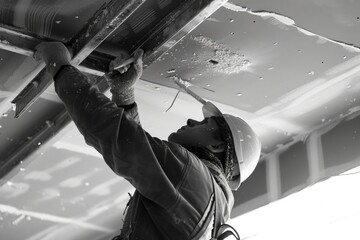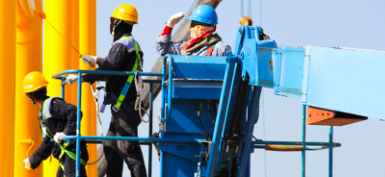What Is a General Contractor?
Whether planning a home remodel or building your dream home, you need an experienced contractor to help turn the blueprints and designs into reality. A general contractor, or GC, is the person who takes on a managerial role for the project and hires subcontractors to perform labor.
Most states require GCs to be licensed. Licensing requirements and exceptions vary by state. Contact General Contractors Richmond VA now!

During the planning phase, a general contractor works with a construction management (CM) firm or project owner to identify key deliverables, project deadlines, and major risks or obstacles. A well-structured plan ensures that projects stay on track, avoid costly overruns, and are completed within budget.
The project scope is outlined, and a contract agreement is established either through open or selective bidding. With open bidding, the general contractor solicits bids from a number of contractors that are judged based on predetermined criteria, such as project approach, technical expertise and financial viability. Governmental regulations often require the lowest and most qualified bid to be selected. On private projects, which typically involve a higher degree of expertise and are more specialized, a GC may invite select contractors to submit bids or engage in direct negotiations with them.
A GC will also establish the construction budget and procure resources, materials, and services. This involves collaborating with architecture and engineering teams to assess the design’s constructability and begin securing any essential permits and regulatory approvals. For large and complex projects, the GC will also evaluate and select specialty contractors that perform specific tasks such as foundation, excavation, demolition or mechanical and electrical work.
Depending on the type of project, a GC can also use a guaranteed maximum price (GMP) contract to limit the owner’s financial exposure. This contract structure sets a cap on the total project cost, and the contractor absorbs any cost overruns. With both types of contracts, open communication with the project team is essential to maintain continuity of work and to mitigate any unforeseen changes in scope.
Vendors are a crucial part of completing construction projects. They may provide materials, equipment, or services for the project, such as concrete supplies, machinery, timber providers, transportation, or contractors and workers. It’s important for general contractors to work with trustworthy and qualified vendors to ensure that the project is completed on time and within budget. To do this, it is essential to perform proper vetting on all vendors before hiring them. This includes checking to make sure they have the necessary insurance policies and background checks. It is also a good idea to check in with them regularly to ensure that their work is on track and they are meeting expectations.
Developing a strong vendor management program can help stabilize the business during supply chain disruptions, geopolitical unrest, and other challenges. This program must include clear goals that align with the company’s priorities and resources. The goals must be clearly communicated to employees and external stakeholders so everyone is on the same page.
Once the goals are established, businesses must start by defining their short- and long-term needs. This will help narrow down the selection of potential vendors and evaluate their capabilities based on price, scope of work, renewal dates, and other factors. The result is a more effective and efficient procurement process.
As existing contracts near their expiration, it’s important to have clear and proven processes for closing out or renewing them. This helps ensure compliance with the terms and conditions and protects against future legal repercussions. It is also helpful to review contract data on a regular basis so that the company can improve decision-making and fine-tune contracts with current suppliers.
Working with a general contractor can be complex for architecture and construction professionals. GCs manage all the moving parts that make up a project, taking the project from initial planning to completion. Depending on the project size, a GC may take on some or all responsibilities themselves, and in other cases, they will contract out specialized labor to subcontractors.
Architects need to communicate effectively with contractors to ensure their vision for the build is fully understood and realized by the GC. This requires a clear line of communication with the GC from the start, with clear protocols in place to ensure the team is always on the same page.
Effective communication between architects and contractors can also help to create a stronger relationship between the two parties. This can be beneficial both in terms of building a strong business relationship for the future, and in ensuring the quality of work is maintained throughout the duration of the project.
You and your GC must have an open and transparent communication chain of command that includes everything from project plans to daily work updates and site visits. This will help you to make sure that everyone is on the same page, which can be essential when it comes to maintaining timelines and budgets.
Keeping your communication channels open can also help you to avoid problems down the road, including delays in payment. It’s essential to be proactive about communicating your payment terms and other business policies with the GC, so that they are aware of the expectations for the project at the outset.
Construction workers work with heavy equipment, machinery, and dangerous tools that can cause significant injury or death if not handled properly. General contractors must establish a strong safety culture on the job site, which requires them to create and implement comprehensive safety policies for their crews and subcontractors to follow.
Safety is a core value of every successful business. It attracts talented laborers and ensures that employees feel their employer is committed to their well-being. In turn, this promotes a workplace culture of responsibility and accountability among employees that is critical to ensuring a high-caliber workforce.
When selecting subcontractors for a project, general contractors must make sure they are qualified and share the same commitment to safety. Contractors should also provide training for their crews on safety protocols and hazard recognition. This can help to minimize the number of accidents and injuries that occur on the job site.
In the United States, contractors must follow OSHA regulations for safety on their job sites. Non-compliance can result in fines and legal repercussions. Contractors can protect themselves by maintaining a COR certification and demonstrating a safety commitment.
General contractors must ensure all subcontractors and suppliers have signed contracts delineating their site safety responsibilities. They must also monitor when subcontractors and suppliers are paid. This is important because people who don’t have contracts with the general contractor can place mechanic’s liens on your property if they aren’t paid for their work. You can prevent this by requesting documents called conditional releases from those who can put liens on your property and then verifying that the amounts have been paid before making payments to the general contractor.




